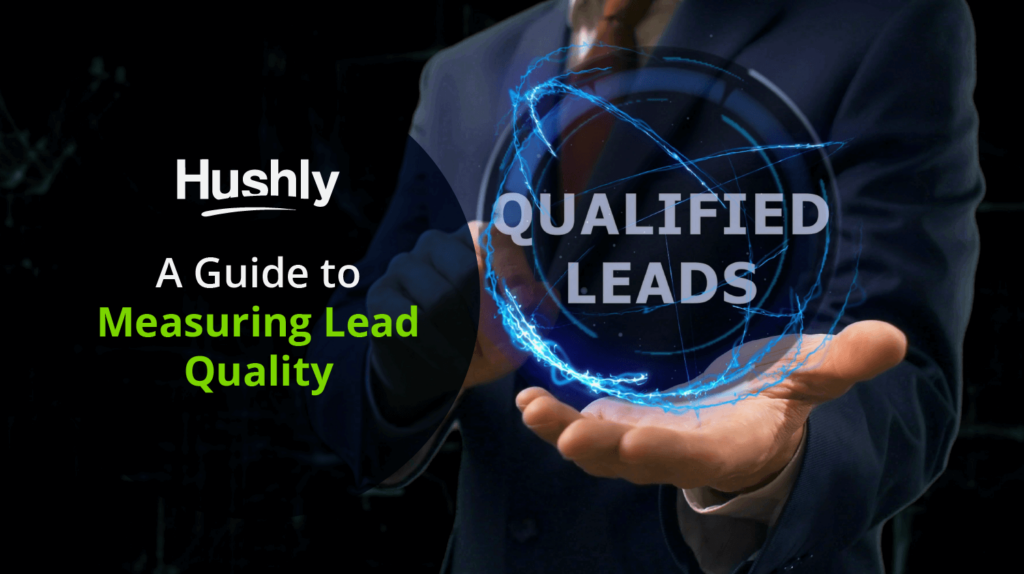Measuring lead quality is an important step to boosting your sales conversion rates and simplifying the lives of your sales team.
An unqualified list of leads can be highly misleading. If most prospects in the stack are only kind of interested in what you’re selling, a salesperson could waste precious time tracking them down only to be met with disinterest.
A qualified stack of leads can avoid this problem by providing a natural sense of direction: determining in advance which leads are the most promising means the salesperson can properly prioritize their workload and target only the most likely sources of revenue.
Today’s guide will cover some advantages of a strong lead qualification program and detailed steps to implement lead quality measurement in your sales process.

What is Lead Quality?
Lead quality means the likelihood that a given prospect, or sales lead, will complete the sales process by making a purchase. Measuring lead quality allows sales teams to prioritize the highest quality leads—only those prospects most likely to buy the product.
In the first place, no lead is high quality if the prospect in question isn’t interested in or capable of buying your product. Hence knowing how likely they are to close before you contact them is an essential piece of information.
Likewise, you may want to know if your prospect could turn into a heavy stream of revenue down the line, so you could qualify leads based on their potential to grow using your product.
Knowing these two critical pieces of information immediately clarifies to your sales team who they should be targeting first and lets your lead generation operations know what kinds of leads are most valuable to track down.
The Advantages of Lead Qualification
Measuring lead quality will be the most significant benefit to your sales team, who will immediately be able to sort prospects into categories based on their interest in your product.
Sales teams who use lead qualification can avoid common time-wasting pitfalls like tracking down customers who aren’t interested in buying your product or trying to sell to someone who can’t afford it.
Most Leads Aren’t Very Good
Consider that only 25% of leads are high-quality enough to advance to sales.
If you’re distributing leads evenly with no scoring system, that’s 75% of your sales team’s efforts in vain, with no guarantee they’ll find the 25% who want to buy the product before those prospects move on and lose interest.
Segment Your Customers
An experienced sales team can tell which products are suitable for specific buyers and tailor a sales experience to that need.
Qualifying leads based on their industry or interests and then targeting prospects with relevant information can help you create a world-class end-to-end buying experience for each customer.
Maximize Revenue
As mentioned above, most of your generated leads won’t be high-quality enough for the sales team to convert. This isn’t necessarily something to be seen as a failure by either demand generation or your sales force: instead, it’s just a simple reality that you can’t close every deal or make every sale.
Instead of looking at poor leads or lost sales, it’s more important and lucrative to focus on the completed sales and those of a high enough quality to convert quickly.
This shift in perspective comes with a renewed focus on maximizing positive-revenue operations: spending most of your time tracking down only the best leads will naturally increase revenue compared to randomly tracking down leads without regard to their readiness to do business.
Factors to Consider When Qualifying Leads
The most crucial factor to consider is what kind of prospect your company sells to most: is it the prospect who closes quickly with small-ish purchases so you can move on to the next? Or is a more significant number of prospects with constant revenue streams the bread and butter your company needs?
Beginning with simple and broad-natured questions like these will help narrow down the number of factors you want to look at.
The BANT System is a tried-and-true way to start if you don’t already have a lead quality program.
The BANT System
BANT is a lead qualification acronym initially developed at IBM. BANT stands for:
- Budget: You’ll need to know your prospect’s budgetary concerns. For example, maybe your prospect’s revenue is seasonal, and they won’t have the cash to make purchases until a certain month of the year. Alternatively, your prospect might never be able to afford your product because they don’t make enough revenue. Both pieces of information should affect their lead score.
- Authority: Is buying your product something that will need to be approved by someone other than the prospect? If so, who else needs to be involved? Will this advance or delay the process of sales? From the authority angle, you can also try and predict what sorts of obstacles will present themselves from within your prospect’s organization. For example, they may need to justify this purchase to a higher-up before they can make it.
- Need: Every prospect has unique pains and pressures that your product can relieve in slightly different ways. Rank needs based on what itch your company will scratch for a given prospect. The more serious the need, and the more directly you can address it, the higher the score should be.
- Timeline: Time matters from the perspective of your salesperson who wants to close the deal as quickly as possible and from the prospect’s point of view. Your prospect may have an urgent problem that needs solving, boosting their lead score. Alternatively, they could be at the beginning of a long buying decision to evaluate many competing products.
How to Measure Lead Quality
Here are four general steps you should follow when measuring lead quality.
1. Determine Your Qualifying Questions
Your first step in crafting an excellent lead quality program is identifying which factors are most important to your company.
You can start by using your current best customers as an example. How did you target them, what are they satisfied with, and how else can you attract more buyers like them?
2. Look from Multiple Perspectives
Your sales team will have one opinion on qualifying your leads, while your demand generation team will have another.
Every relevant voice should have a seat at the table when crafting your lead quality program. This is important because it will ensure all parties are on the same page and give these departments a chance to speak up on important issues.
3. Measure Progress
Hushly’s advanced content engagement solutions include the ability to measure your conversion rates and provide complex data on what your most lucrative sales funnels ultimately are.
However, once you complete this step, make sure you’re keeping track of metrics that matter for your business. Use these to rethink your system as often as necessary.
4. Be Willing to Rethink Your System
Implementing a lead quality program will take work and some likely failures. The process won’t be perfect the first time you implement it. Be ready to identify the program’s weak points, listen to feedback from your employees, and make changes frequently where needed.
Start Qualifying Leads Now
The ability to sell your product to customers that need it is the core of what makes a business a business. A quality ranking program will help your sales team convert more sales in less time and help your demand generation team identify the most lucrative prospects.
Contact us today to see how Hushly can help you find and convert higher-quality leads today.




